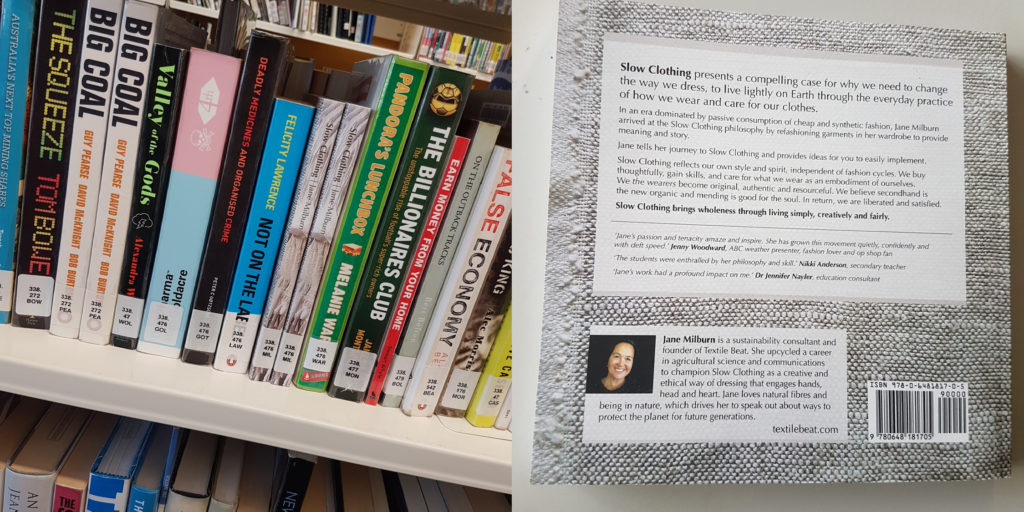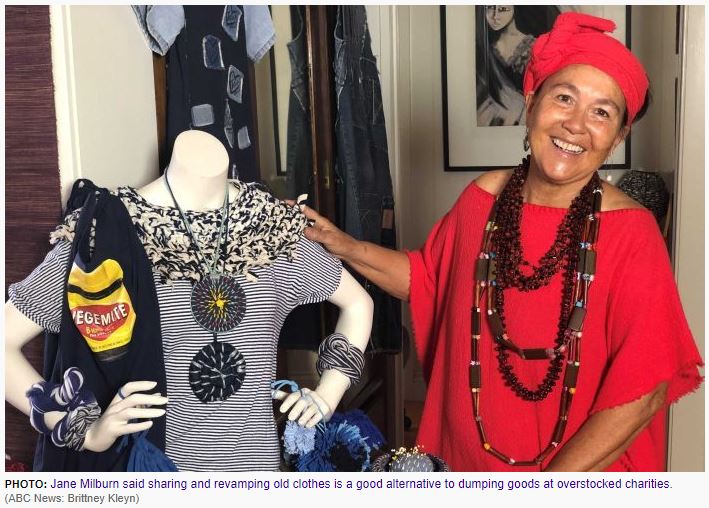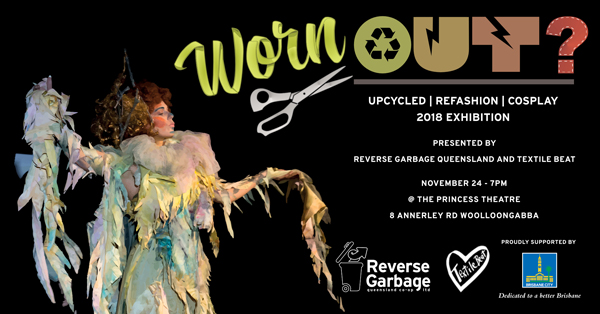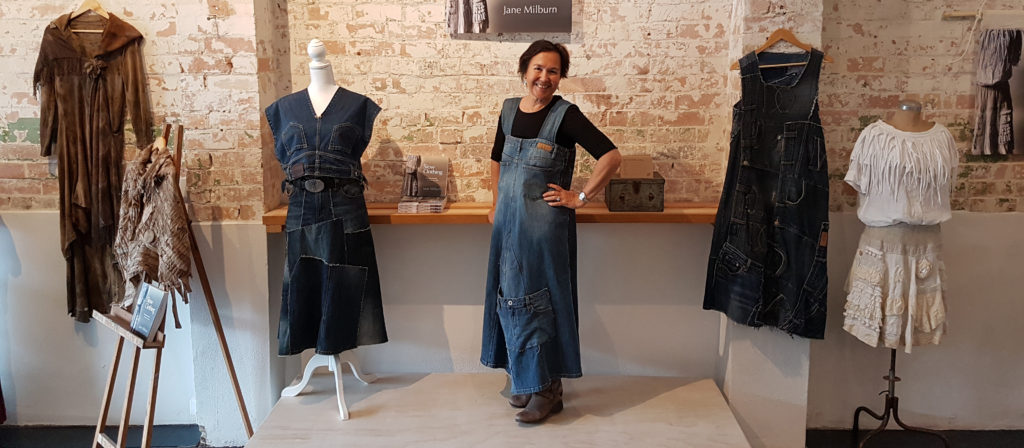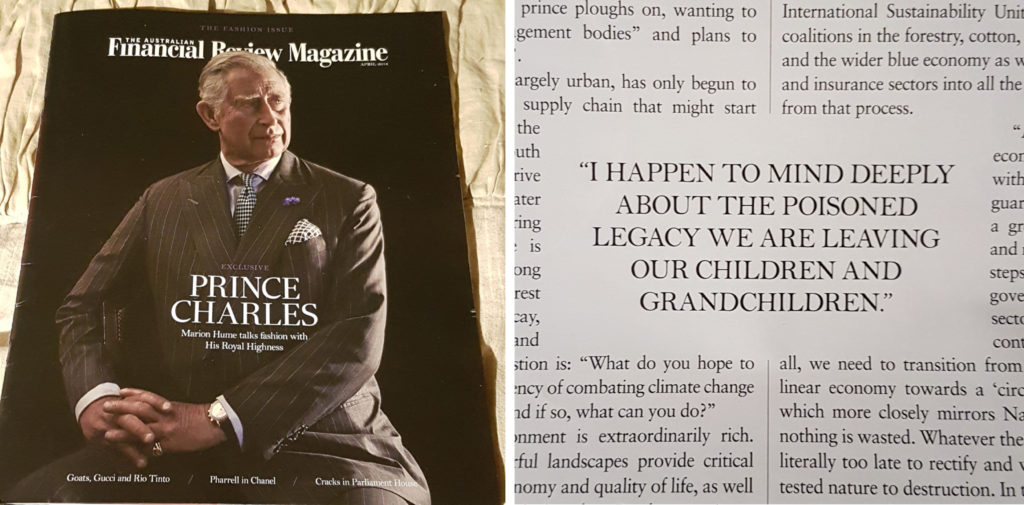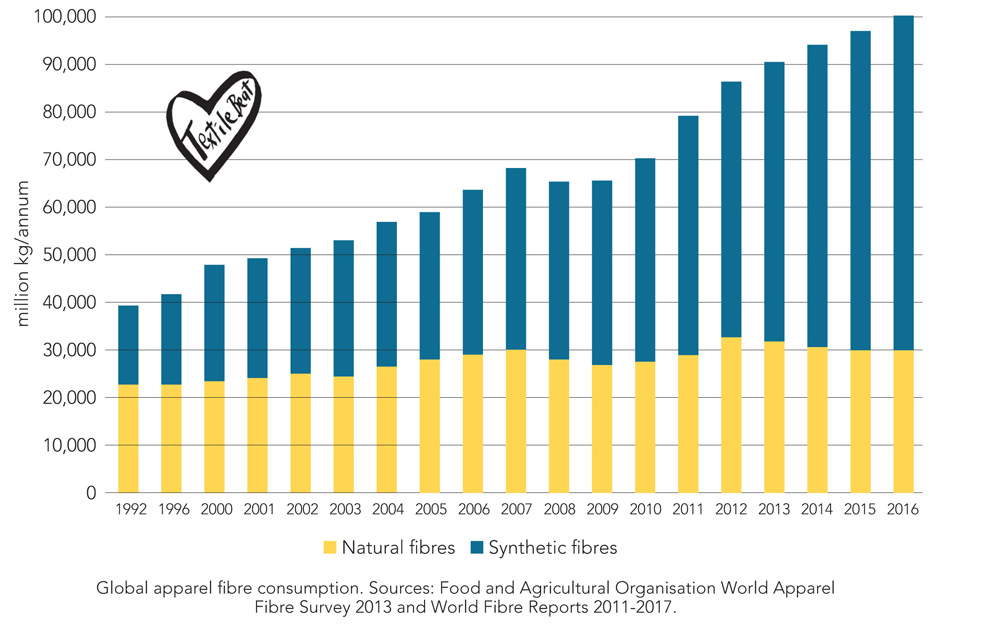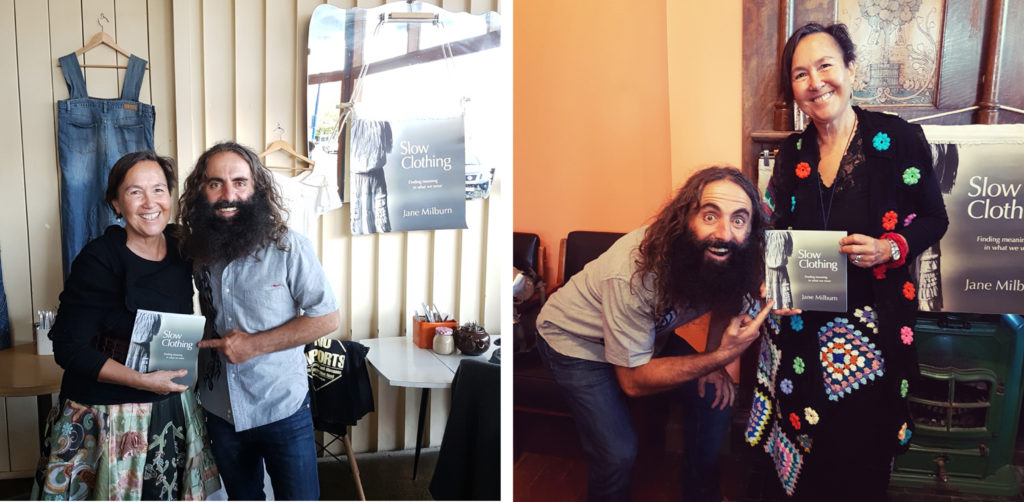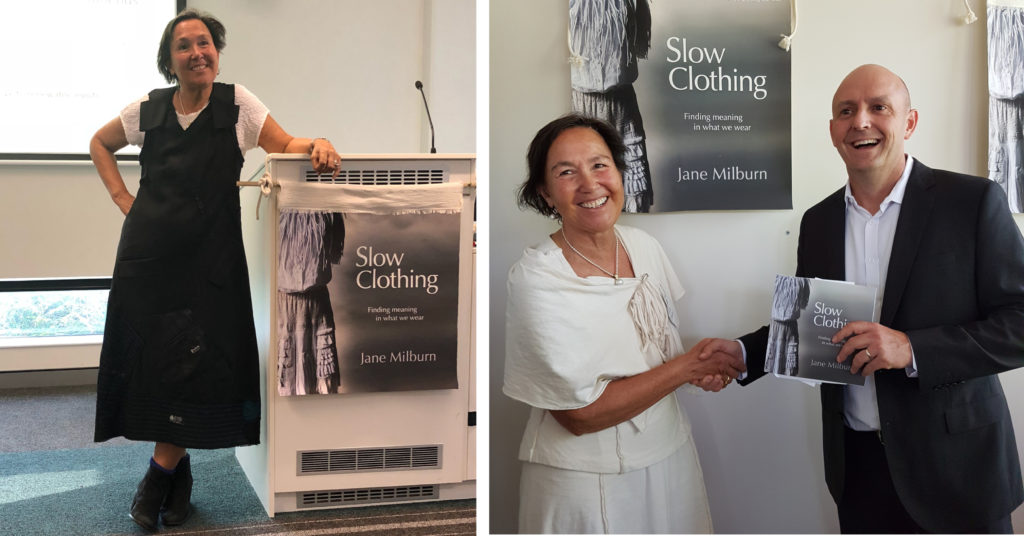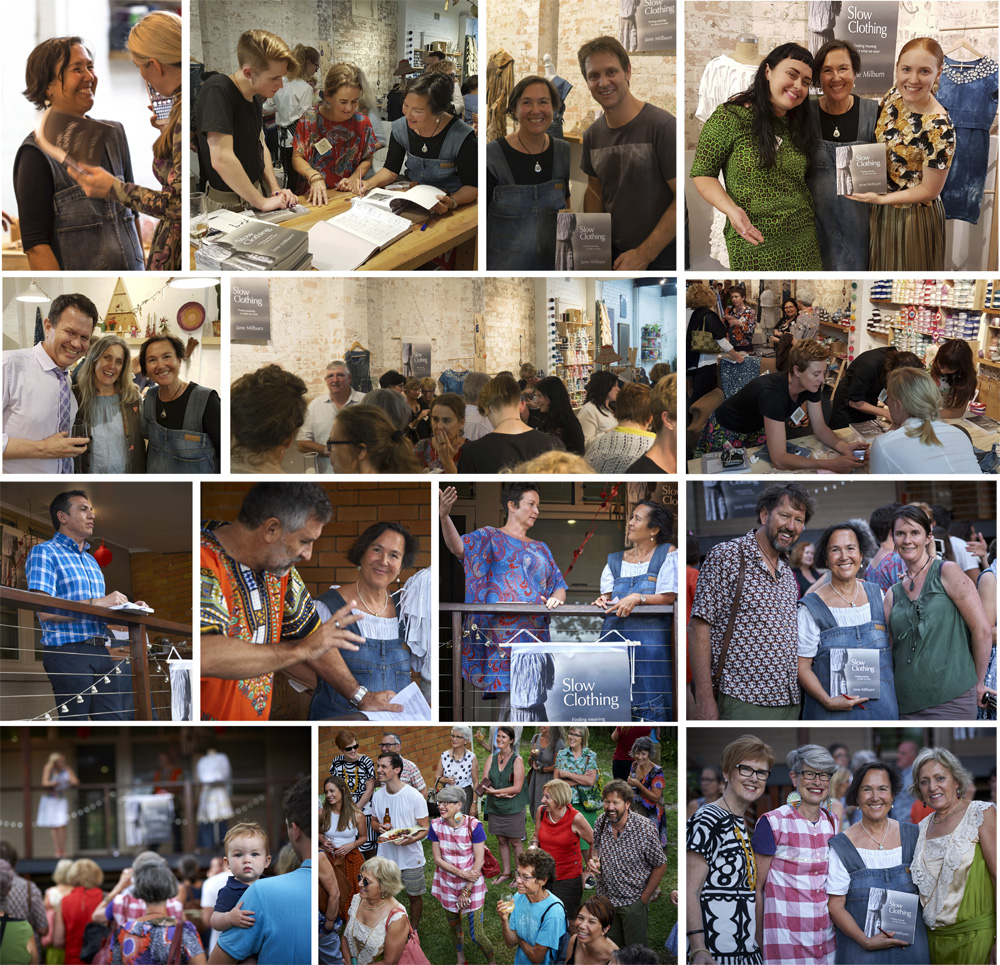Peak stuff is here
Consumer culture is overwhelming us. New stuff arrives with Christmas gift traditions and Boxing Day sales, then we seek to shed old stuff and declutter for the New Year ahead. We take wisdom from the Minimalists and Marie Kondo and aim to move on stuff that isn’t bringing us joy. But there’s nowhere for it to go because almost everyone’s got too much stuff.
ABC News revealed shocking images of stuff dumped outside charity shops which are so overwhelmed by offerings that many have called time on donations for now. On top of that, there’s nowhere for our recycled stuff either.
Culture change is coming
The burying and burning secrets are out. A culture shift is happening as individuals and groups respond in various ways to reducing fashion waste and creating a more sustainable clothing culture. We all have capacity to change and influence behaviours when we believe in something and are comfortable to defy convention and conditioning.
Evidence continues to mount that we are overusing resources, indulging in wasteful consumption, polluting our atmosphere and oceans with CO2 and plastic. As individuals we can influence change through more responsible purchasing decisions, while we wait (sometimes in vain) for national governments to adopt sensible policy.
Refashioning a future without waste
Refashioning clothing and textiles for new life is one way to reduce waste, and reuse organisation Reverse Garbage Queensland (RGQ) is set to demonstrate the limitless possibilities when their wearable art exhibition, WornOUT, returns for another year.
WornOUT 2018 will be co-presented by Textile Beat and proudly sponsored by Brisbane City Council. It will kick off with an opening night launch event at the Princess Theatre in Woolloongabba on November 24 from 7pm. The event is free, open to the public and will feature runway showcases for Refashion, Wearable Art and Cosplay.
A commonsense approach
The simplest way to reduce our material footprint is wear clothes that already exist and wear them for longer. Less shopping and washing makes economic and ecological sense.
At no time in history have there been so many clothes in the world. In the four years to 2016, global production of new clothes rose 25 percent as did the export of cast-offs from Australia to the third world.
Define ethics as ‘the right thing to do’ and it becomes common sense to shop second-hand first, and re-wear what we own. These are the actions of thinking people.
Sustainability in fashion
Long before sustainability became fashionable, HRH Prince Charles was urging people to consider the environment when choosing what to wear and patron of the campaign promoting wool as a renewable and biodegradable resource.
In The Australian Financial Review Magazine April cover story, Marion Hume reported Prince Charles has long suspected synthetics would impact the environment and ‘minds deeply about the poisoned legacy we are leaving our children and grandchildren’. He also ‘hates throwing away things without finding another use for them or mending them’.
What are your clothes made from?
Clothes are made from three fibre types – synthetic fibres, reconstituted cellulose fibres and natural fibres – or blends of these.
Synthetic fibres – polyester, acrylic and nylon – are derived from petroleum and are a type of plastic. While cheap to produce synthetic fibres shed microplastic when washed, don’t breathe and research shows they are likely to harbour more bacteria and odour than natural fibres. Synthetics also gather static electricity and may cling to your body in uncomfortable and embarrassing ways.
Reconstituted cellulose fibres – such as viscose, rayon, bamboo, lyocell and tencel – while manmade are derived from plants and wood and therefore more natural then synthetics. They have design advantages, are comfortable to wear and easy care but there are concerns about chemicals used in their production.
Natural fibres – cotton, wool and linen – tend to be more expensive and water-intensive to produce, therefore we should treasure them until they wear out. Cotton is the dominant natural fibre. Seek out sustainable and organic cotton where you can. Linen is one of the greenest fibres but often out of favour because it wrinkles (wash, shake, hang to dry and wear without ironing). Hemp is less readily available, but equally as green as linen (if not more so). Animal fibres like wool, alpaca, cashmere and silk are expensive and need a little extra care but will last a long time and wear well between washes.
Slow Clothing, book launch Victoria
Practical and sustainable ways of dressing for health and wellbeing are central themes of a new book launched in Victoria on March 19.
Slow Clothing: finding meaning in what we wear responds to ethical issues arising from fast fashion culture which include waste, pollution and exploitation.
Dressing for health and wellbeing
We can leave home without eating occasionally but never without dressing!
Dressing is integral to life but what we wear is so often discussed in a fashion context of colour, shape and style. The broader view considers health and wellbeing aspects that respond to fashion waste, pollution, and exploitation issues.
Australian social entrepreneur Jane Milburn, founder of Textile Beat, has spent five years studying the need to transform a culture of fashion excess to a more thoughtful and engaged approach.
Jane’s new book Slow Clothing: finding meaning in what we wear was launched in Canberra at the Australian Rural Leadership Foundation by economist Richard Dennis who, in his own book (Curing Affluenza) proposes buying less stuff as a way to save the world.
On the Textile Beat
Textile Beat is a leadership initiative that responds to ecological and social issues associated with contemporary clothing culture in developed nations. Our regular enews On the Textile Beat includes a range of news and views, including details about our advocacy work, talks and workshops. If you are interested in slow clothing, natural fibres, dressing with conscience and reducing textile waste, then you might like to sign up to our newsletter, on the right hand side of this webpage. Meanwhile, here’s the link to our latest enews, which includes photos from the Sydney and Brisbane launches of Jane Milburn’s new book Slow Clothing: finding meaning in what we wear.
